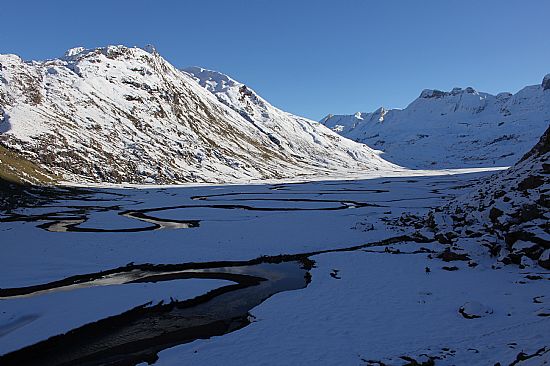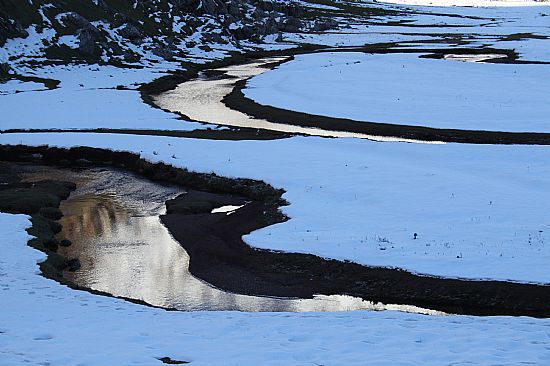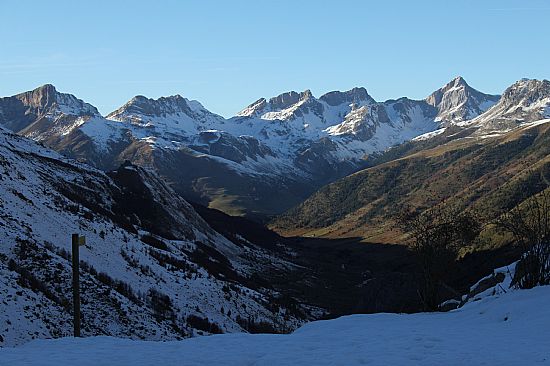Ansó, 3 December
by Isabel Isherwood - 22:45 on 03 December 2016
Just a quick one. It has been a while since I last wrote: we spent a week in the UK for Mum’s 70th birthday, and since then there seems to have been a lot going on….
But we are at the start of a fairly easy week: the coming Tuesday is a national holiday celebrating the Immaculate Conception. I found this fascinating – assuming Jesus was immaculately conceived on the 6th of December, his gestation was either extraordinarily fast or horribly prolonged….. However in the event that he was rushed from conception to birth in just under three weeks, it sounds like conceiving immaculately is definitely the way to go. I wonder why more people don’t do it?
Anyway, here when a holiday falls on a Tuesday the kids get the Monday off as well (it is called ‘Puente’ – a bridge day). So we have a four-day weekend, followed by another day off on Thursday for a national holiday in celebration of the Spanish Constitution (the written document I think, rather than their robust good health).
We are having fabulous weather at the moment – clear sunny days and very cold nights. There is snow on the mountains but still not down near the village. We decided to head up to Aguas Tuertas (literally ‘twisted waters’), a hanging valley right up in the Pyrenees which we have passed through a few times before at warmer times of year. It is a fabulous verdant valley surrounded by high peaks, with a wide, shallow river meandering through it in great snaking loops. In summer it is grazed by herds of cattle and horses and the surrounding rocky slopes are bright with flowers and ringing with the whistling calls of marmots. We wanted to see it in the snow, but to be honest hadn’t really stopped to think that it would be snowy getting up there too….. The walk is a fairly easy three kilometres up a track, but today, after mild days and freezing nights and the passage of several vehicles, the track was an ice-rink. We made it both ways, but have a number of exotic bruises now developing nicely….

It was worth it, however. It is in many ways quite like parts of Scotland; what makes it so special is that it is quite unlike anywhere else we’ve been in Spain. Very few valleys here are glacier valleys – most are the classic v-shaped river valleys that we all drew in our notebooks at school (or else magnificent chiselled gorges). Aguas Tuertas is a proper ‘U’. It feels remote and beautiful and yet somehow familiar and homely at the same.

Looking back down the lower La Mina valley from the lip of Aguas Tuertas, the contrast between the north and south facing slopes was stark: the north face was shades of black white and grey, tiers of grey crags fringed with icicles, separated by steep snow slopes scattered with dark pines. The south-facing slope across the valley was green and russet and gold, and positively glowing in the afternoon sun.

The difference between north and south facing slopes is something we’re growing increasingly aware of the more we explore this area. In the snow the difference is particularly marked, but around Ansó we had started to notice that north-facing slopes are quite luxuriantly wooded, with a lot of tall pine and beech and a dense understorey. South-facing slopes by comparison tend to be much sparser, with thin forests of stunted pines and a scattered undergrowth of box and juniper, with a lot of bare rock and un-vegetated earth. In summer south-facing slopes are baked and dried out to such a degree that presumably many less hardy species can’t survive, and those that can are only able to grow very slowly, while north slopes retain moisture and still benefit from plenty of light. In the winter the tables are turned - north slopes are noticeably dark and will be covered with snow for long periods while south-facing slopes get the sun and moisture from regularly-melting snow; but presumably this respite is not enough to make up for the hammering they receive in the summer months. The clearly-visible distinction has even given rise to specific words in the local language: a paco is a north face, while a solana is a south face. We had been reading these names on maps for quite some time before the penny dropped!
Add your comment